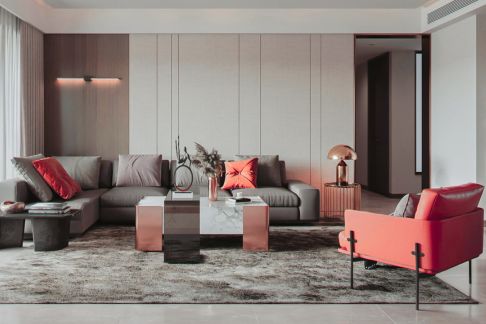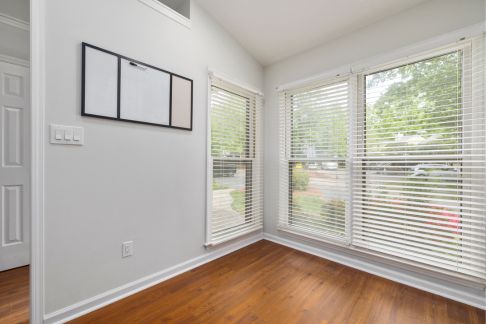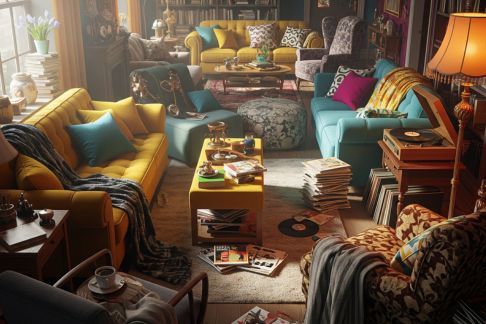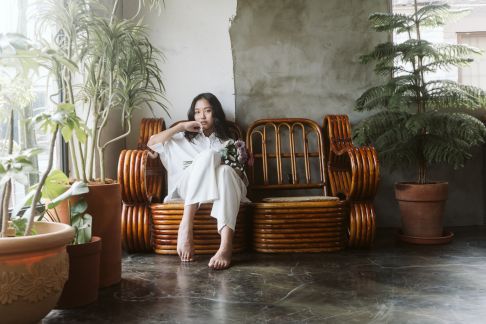Light yellow may be subtle, but it’s bursting with warmth, charm, and personality — especially when used right in kitchens, the heart of the home.
The kitchen is no longer just a functional space; it’s an experience. And while bold hues have long dominated, there’s a new favorite on the rise — light yellow. Cheerful yet calming, soft yellow tones bring in sunlight even on the dullest days. But much like white, light yellow needs to be styled carefully — done right, it can radiate joy and warmth; done wrong, it can feel overly bright or dated.
So how do you strike the right balance? Here are 5 expert-backed tips to create a light-yellow kitchen that’s anything but boring.
1. Choose Smarter Materials That Maintain Their Glow
Lighter colors like soft yellow can quickly lose charm if not paired with the right finishes. Durability and ease of maintenance are key.
Best suited for:
Modern modular kitchens in urban homes or villas where design meets daily functionality.
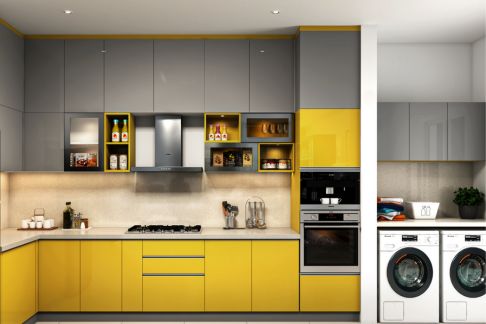
Styling tips:
- Opt for PU-finish or acrylic kitchen shutters in pastel yellow tones for a clean look that resists everyday stains.
- Pair them with quartz countertops that are non-porous and easy to wipe clean — beige or ivory shades blend beautifully with yellow.
- A frosted or glossy glass backsplash can add texture and make cleaning effortless.
What it adds to your space:
A kitchen that radiates soft sunshine while being low on upkeep — fresh, functional, and stylish.
2. Use Lighting That Complements and Calms
Light yellow reflects and amplifies natural light — but without the right artificial lighting, it can feel too bright or stark.
Best suited for:
Kitchens that flow into open living or dining areas.
Styling tips:
- Install warm LED strip lighting beneath wall cabinets to create gentle illumination for workspaces.
- Add pendant lamps in natural textures like cane or wood to complement the yellow.
- Choose recessed ceiling lights with a soft 2700K–3000K glow for a cozy finish.
What it adds to your space:
A soft, ambient kitchen atmosphere — never glaring, just glowing.
3. Add Texture and Natural Elements to Ground the Look
Light yellow needs depth — without texture or accents, it can feel too flat. Natural elements bring it to life.
Best suited for:
Design themes like Scandinavian, Farmhouse, or Japandi — where minimalism meets warmth.
Styling tips:
- Use wooden open shelves to break the yellow tones with natural wood textures.
- Include cane stools, wicker baskets, or warm metallic hardware like matte black or brushed brass.
- Add greenery — hanging planters or potted herbs — for a soft, organic touch.
What it adds to your space:
A grounded, homey feel with visual richness — ideal for elevating a soft yellow palette.
4. Make the Kitchen Feel Bigger with Clever Visual Tricks
Yellow tones already brighten spaces — when styled right, they can visually expand even the smallest kitchen.
Best suited for:
Apartments, studio layouts, or compact kitchens.
Styling tips:
- Use consistent yellow tones across shutters, walls, and backsplashes to reflect light.
- Opt for glass-front cabinets or open shelving to keep things airy.
- Include reflective surfaces like glossy tiles or partitions with glass accents to enhance openness.
What it adds to your space:
The illusion of a more expansive, breathable kitchen — especially effective in tight urban homes.
5. Keep It Flexible with Easy-to-Swap Accents
One of light yellow’s biggest advantages is how easily it adapts — you don’t need a full renovation to refresh the space.
Best suited for:
Homes that shift styles with seasons, moods, or evolving family needs.
Styling tips:
- Add removable backsplashes or decals to one wall, or swap out soft elements like cushions, rugs, and towels.
- Brighten things up with colorful crockery, planters, or accent lighting.
- Rotate artwork or display pieces to introduce playful contrast without long-term commitment.
What it adds to your space:
An evolving, joyful kitchen that never feels stuck — personal and playful with just the right pop.
Expert Tip:
Look for anti-scratch laminates, PU finishes, and non-porous countertop materials that hold up beautifully with daily use. These make maintaining a light color scheme stress-free and stylish.
Final Thought
A light yellow kitchen isn’t just a trend — it’s a mood. With the right blend of texture, material, and functionality, you can create a space that’s both happy and high-end. Whether you’re building new or refreshing old, think soft sunshine, subtle contrasts, and smart product choices that make the space truly yours.
